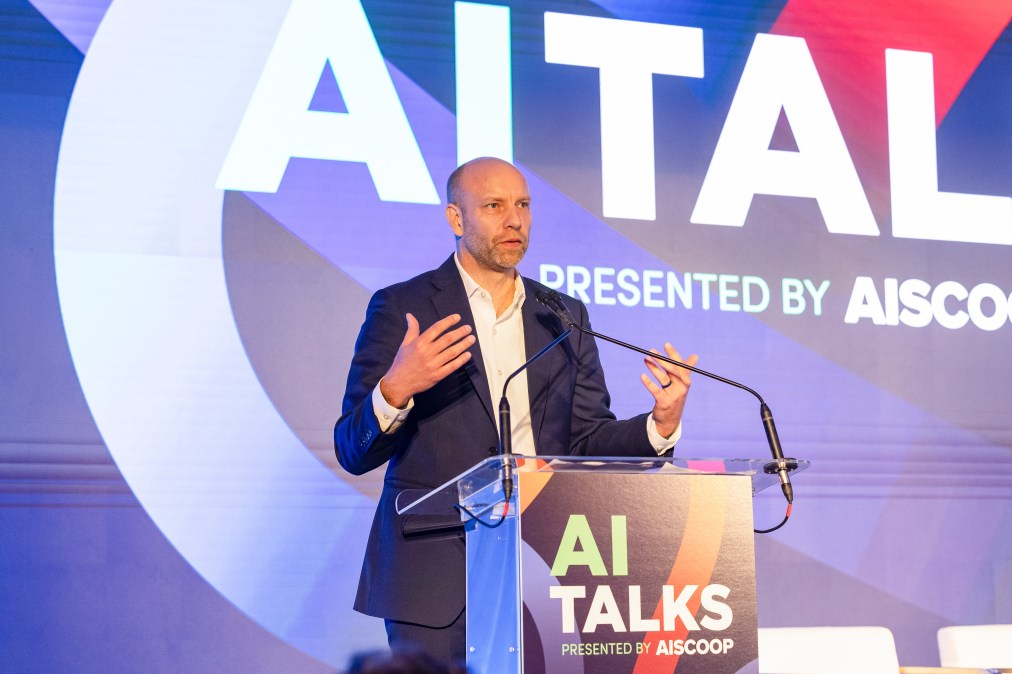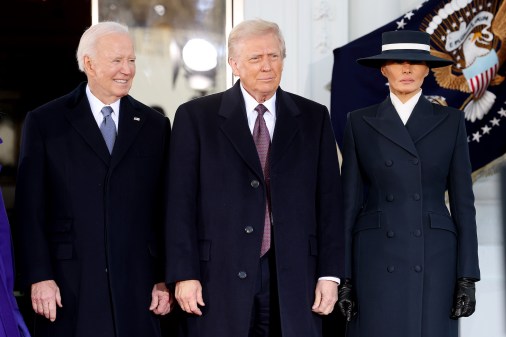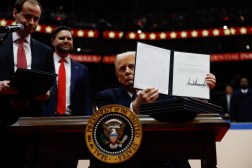White House hopeful ‘more maturity’ of data collection will improve AI inventories

An expansion of the process for agencies’ AI use case inventories outlined in the Office of Management and Budget’s recent memo will benefit from “clearer directions and more maturity of collecting data,” Deputy Federal Chief Information Officer Drew Myklegard said.
Federal CIO Clare Martorana has “imbued” the idea of “iterative policy” within administration officials, Myklegard said in an interview Thursday with FedScoop at Scoop News Group’s AITalks. “We’re not going to get it right the first time.”
As the inventories, which were established under a Trump-era executive order, enter the third year of collection, Myklegard said agencies have a better idea of what they’re buying, and communication — as well as the skills for collecting and sorting the data — are improving.
On the same day OMB released its recent memo outlining a governance strategy for artificial intelligence in the federal government, it also released new, expansive draft guidance for agencies’ 2024 AI use case inventories.
Those inventories have, in the past, suffered from inconsistencies and even errors. While they’re required to be published publicly and annually by certain agencies, the disclosures have varied widely in terms of things like the type of information contained, format, and collection method.
Now, the Biden administration is seeking to change that. Under the draft, information about each use case would be now collected via a form and agencies would be required to post a “machine-readable” comma-separated value (CSV) format inventory of the public uses to their website, in addition to other changes. The White House is currently soliciting feedback on that draft guidance, though a deadline for those comments isn’t clear.
In the meantime, agencies are getting to work on a host of other requirements OMB outlined in the new AI governance memo. According to Myklegard, the volume of comments was the highest the administration had seen on an OMB memo.
“We were really surprised. It’s the most comments we’ve received from any memo that we’ve put out,” Myklegard said during remarks on stage at AI Talks. He added that “between those we really feel like we were able to hear you.”
The memo received roughly 196 public comments, according to Regulations.gov. The same number for OMB’s previous guidance on the Federal Risk and Authorization Management Program (FedRAMP) process, for example, was 161.
Among the changes in the final version of that memo were several public disclosure requirements, including requiring civilian agencies and the Defense Department to report aggregate metrics about AI uses not published in an inventory, and requiring agencies to report information about the new determinations and waivers they can issue for uses that are assumed to be rights- and safety-impacting under the memo.
Myklegard told FedScoop those changes are an example of the iterative process that OMB is trying to take. When OMB seeks public input on memos, which Myklegard said hasn’t happened often in the past, “we realize areas in our memos that we either missed and need to address, or need to clarify more, and that was just this case.”
Another addition to the memo was encouragement for agencies to name an “AI Talent Lead.” That individual will serve “for at least the duration of the AI Talent Task Force” and be responsible for tracking AI hiring in their agency, providing data to the Office of Personnel Management and OMB, and reporting to agency leadership, according to the memo.
In response to a question about how that role came about, Myklegard pointed to the White House chief of staff’s desire to look for talent internally and the U.S. Digital Service’s leadership on that effort.
“It just got to a point that we felt we needed to formalize and … give agencies the ability to put that position out,” Myklegard said. The administration hopes “there’s downstream effects” of things like shared position descriptions (PDs), he added.
He specifically pointed to the Department of Homeland Security’s hiring efforts as an example of what the administration would like to see governmentwide. CIO Eric Hysen has already hired multiple people with “good AI-specific skillsets” from the commercial sector, which is typically “unheard of” in government, he said.
In February, DHS launched a unique effort to hire 50 AI and machine learning experts and establish an AI Corps. The Biden administration has since said it plans to hire 100 AI professionals across the government by this summer.
“We’re hoping that every agency can look to what Eric and his team did around hiring and adopt those same skills and best practices, because frankly, it’s really hard,” Myklegard said.






